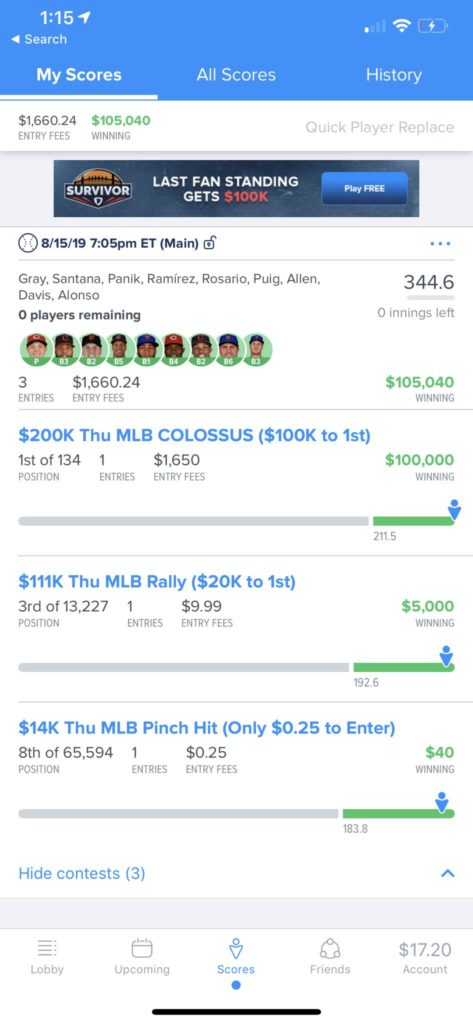Win Daily Show Interview with James Rocker
On this Win Daily Show Interview with James Rocker, he and Michael discuss Rocker’s Fantasy Sports career as well as his day job.
James Rocker joins Michael Rasile to discuss how he start in the Fantasy Sports world and how he joined the Win Daily Sports Team!
Rocker is a business owner by day and a DFS star by night focusing a lot of his time on the baseball space. He has multiple takedowns and looks darn good doing it. Rocker’s business does take up a lot of his time, but he still finds the energy to put in the world here at Win Daily Sports to help other in the discord chat and with articles.
Through his business where he helps companies manage their IT, he was asked by a client to potentially work on their daily fantasy sports site. This brought back fond memories of season long for Rocker and he looked deeper into DFS.
This led him down a rabbit hole of Fantasy sites eventually landing on FanDuel and DraftKings. He put in the time and the work after hours that got him in the winners circle of a few tournaments and he was hooked!
He crushes MLB when its around and looks to always be doing what he can for our team and our users.
Listen to Rocker’s Interview below!
You can also check out his interview on these platforms
Apple Podcasts
Spotify
Anchor
Make sure to follow Rocker!
https://twitter.com/THEDFSNERD
https://twitter.com/NerdsThatCare
https://nerdsthatcare.com/
Make sure to follow Win Daily, too!
https://www.instagram.com/windaily/
https://twitter.com/windailysports
https://www.youtube.com/channel/UCY2I3VNyf_dtW-2xl5vwv0Q
https://www.twitch.tv/windailysports
https://windailysports.com/
Hop on our Free Expert Discord Chat!
https://discord.com/invite/QsK3HJs












